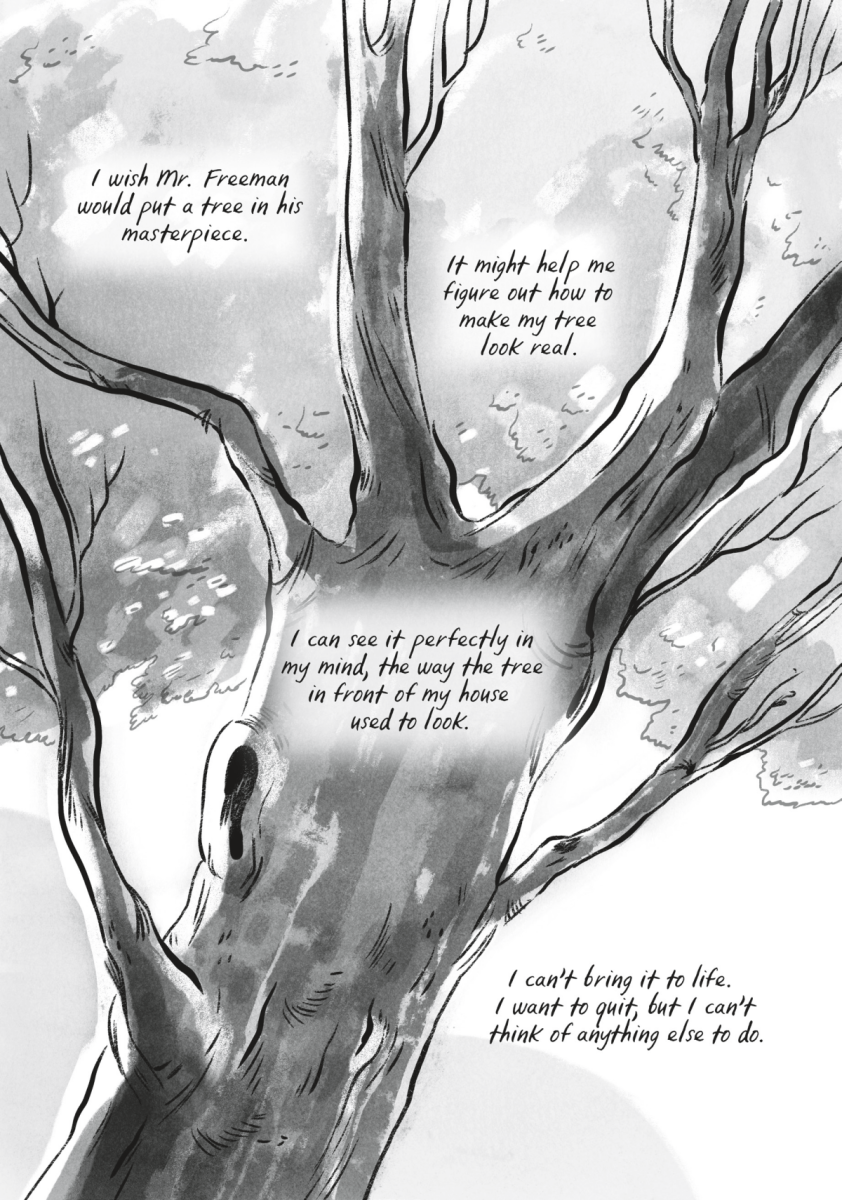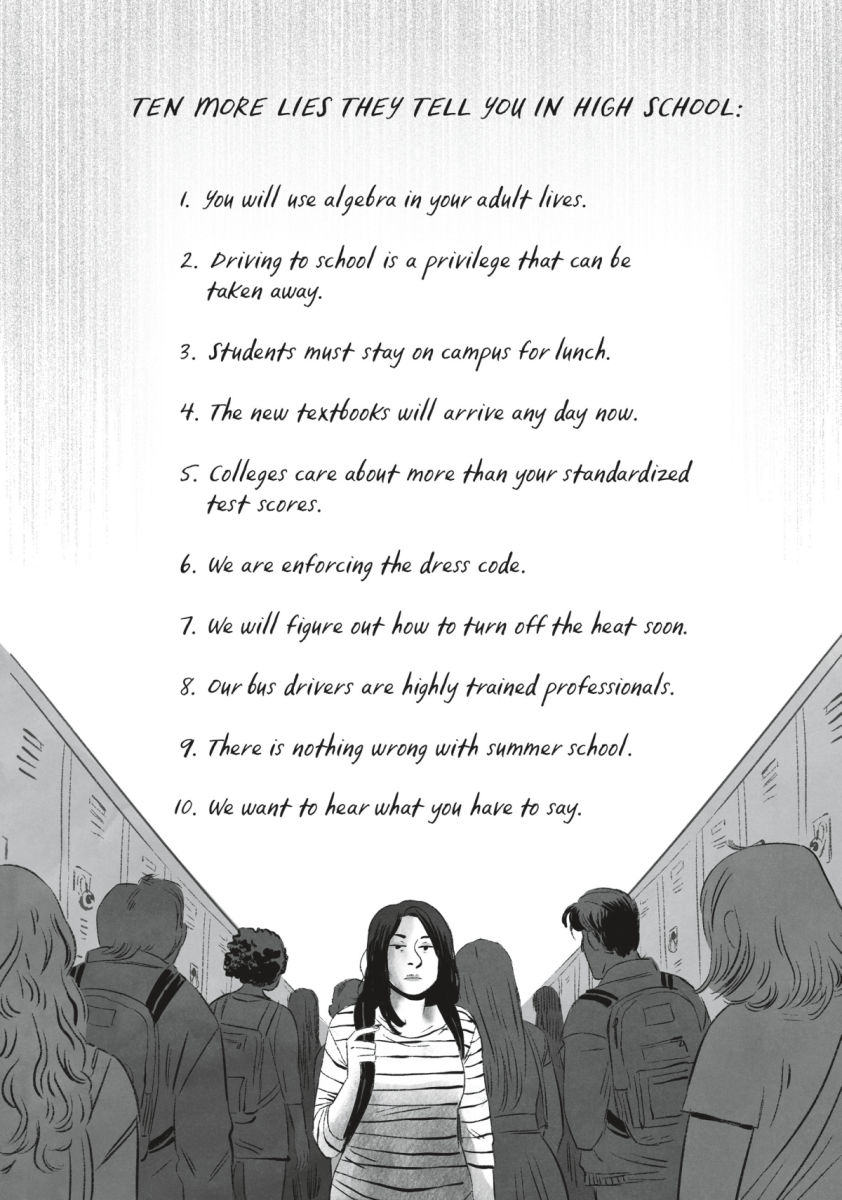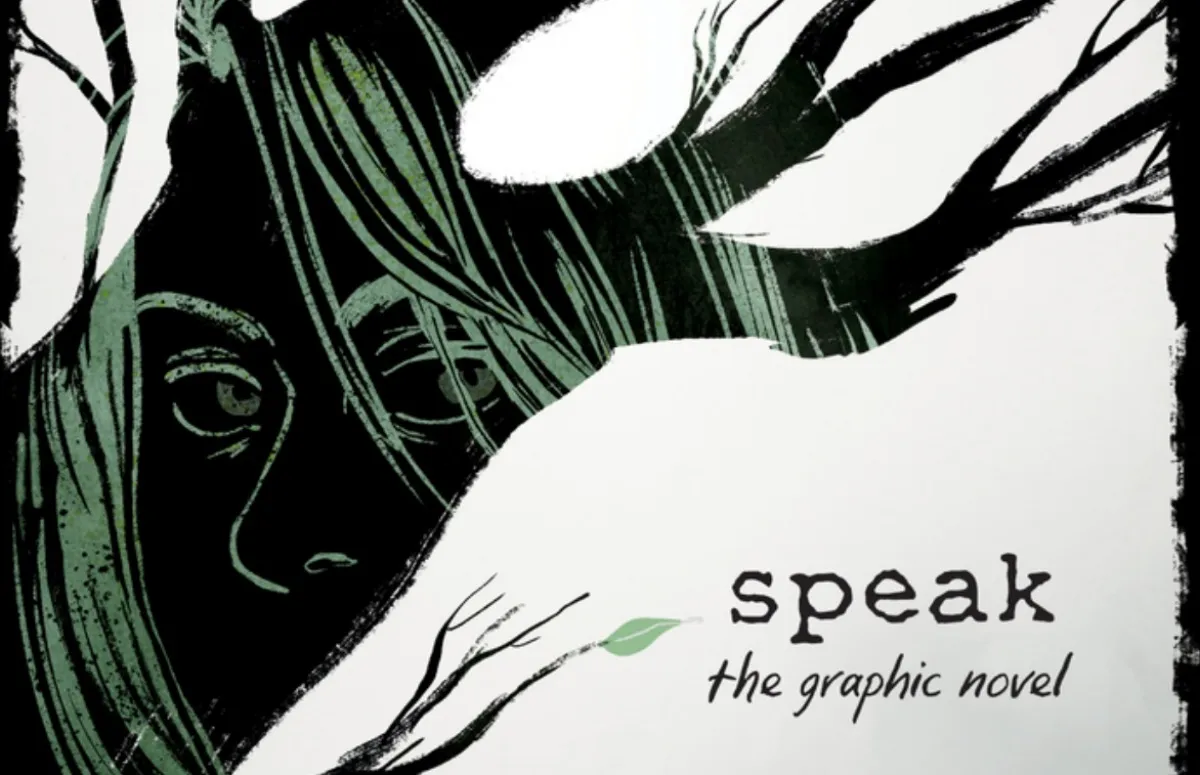Speak was the first time I’d ever understood what rape was. I knew what it technically was, saw Gladiator way too young, but in terms of the emotional trauma it could cause in a human being, that was illustrated to me in Speak.
Melinda’s story, although almost 20 years old at this point, still holds true. It seems odd to revisit Speak in the era of #MeToo and realize that women are still fighting the same fights, yet that’s probably why it’s more important than ever as a touchstone of young adult literature. As a graphic novel with the skillful talents of artist Emily Carroll, it takes the story into a whole new place even for those who’ve read it before. With books like Speak, Broken Beautiful Hearts, and The Hate You Give, and the push social media has given to democratizing experiences, I hope that this book will reach the hands of young people today who need to be told, “You are not alone. Your voice matters. You can speak.”
Q&A with Laurie Halse Anderson
TMS: I remember where I was when I first read Speak for the first time. It was in 2004, right as the movie was getting ready to come out (staring a pre-Twilight K-Stew). Now, nearly twenty years after publication it is being turned into a graphic novel. What was it like seeing your work come to life in a new way?
Anderson: My involvement with the movie was minimal, but I did hang around the set for a few days and made a cameo appearance in the film (I’m the lunch lady who awkwardly serves up mashed potatoes). Watching how the cast and crew told the story helped shape me as an author. Likewise, the process of writing the graphic novel was an incredible opportunity to develop my craft.
Both the film and graphic novel present the viewer/reader with the same emotional energy, but translated into slightly different dialects of storytelling. The process of these three projects has been SO MUCH FUN! Yay for the power of creating art!!
TMS: Speak for my generation changed the way we talked about rape, trauma, and recovery. What have you, as the author, seen as the biggest impact telling this story has left behind? What do you hear from readers about how it helped them?
Anderson: Speak has helped a generation find its voice. That awesome generation is the driving force that has begun the dismantling of rape culture. Speak certainly isn’t the only reason this is happening; it is part of several generations of feminist art that fights back against sexual violence and toxic masculinity.
Readers tell me that the book gives survivors a model and the words they’ve needed to help them talk about their own traumas. After they turn the last page, they’ve gone, book in hand, to speak up about being sexually assaulted to their mothers, friends, partners, counselors, English teachers, librarians, and doctors.
I applaud their courage, and I am humbled by it.
TMS: The conversation about rape and sexual violence has grown so much since the ’90s. What do you think are the biggest changes in how we talk about sexual assault? If you were writing Speak now, how do you think the story would be different?
Anderson: The only thing that would be different would be the impact that technology has had, which was something we tried to do (subtly) in the graphic novel version. For those of us on the front lines of these issues, we see the changes underway. Most people, especially children, aren’t on the front lines. They are still dealing with predators, ignorance, and adults who themselves are too frightened or unprepared to talk about sexuality.
TMS: You have written so many amazing books. Chains and Wintergirls are among my favorites. Part of what makes your work so impactful is that you don’t speak down to young people, nor are you afraid of confronting the darkness of the subject matter head-on: no matter if it is rape, slavery, mental illness. How do you as an author make sure that you are telling the story honestly, but also ensuring that it doesn’t inch towards the exploitative?
I really appreciate this question! What you are talking about requires two answers, one that deals with inspiration and the other with craft.
Because of the way I am wired and my life experiences, I am drawn to stories about injustice, which guarantees that my tales will be “dark.” It’s dark being a teenager, especially a teen navigating the challenges of being marginalized, traumatized, or unseen … sometimes all three at the same time. My stories are inspired by the teens trying to survive all of that.
How I weave these dark stories while avoiding the exploitation aspect is simple: I center the story on the growth of the hero. More than darkness, my stories are about resilience; that powerful combination of hope, stubbornness, and emerging strength.


TMS: Throughout the entire novel, we watch Melinda get her voice back, and one of my favorite parts, which is illustrated perfectly in the graphic novel, is when she writes “Guys To Stay Away From: Andy Evans” on the bathroom wall. Then slowly, everyone starts sharing their moments. When I was reading it again in preparation, all I could think was: this is #MeToo. This is the “Shitty Media Men” list. We have been talking about this forever. Why do you think we are still having the same conversations and why men still haven’t gotten the message yet?
Anderson: Our men haven’t gotten the message yet because (generally speaking) they have not been a part of these conversations. This is why speaking up is the only way this will change. Our culture has not yet consistently shamed, blamed, and required consequences of people who commit acts of sexual aggression all along the spectrum from harassment to rape.
We also need to start healthy conversations about sexuality and consent much younger and continue them throughout our lives.
TMS: Finally, for you, the author, Speak has been one of your biggest contributions to not just literature, but also academia. It’s read in high schools has been adapted into film and now a graphic novel. How has Speak affected you all these years later? Is it hard to sometimes be attached to something so beautiful, but also so tragic at the same time?
Anderson: I’ve been so lucky to be a part of this energy. Just the writing of the book—even if it had never been published—helped me find the courage to speak up about being raped when I was a teen. I finally received the support I needed and worked with a therapist who helped me deal with the depression that cast shadows in my life for so long.
It has been my privilege to listen to thousands and thousands of survivors share their stories. We’ve cried together, handed each other tissues, and taken shaky breaths. It’s emotional, certainly, to be a part of this, but those tears bring new life to all of us.
Speak: The Graphic Novel is now in stores.
(image: Emily Carroll/Author Photo: Joyce Tenneson)
Want more stories like this? Become a subscriber and support the site!
The Mary Sue may earn an affiliate commission on products purchased through links.
—The Mary Sue has a strict comment policy that forbids, but is not limited to, personal insults toward anyone, hate speech, and trolling.—










Published: Feb 15, 2018 04:45 pm